|
 Inocybe calamistratoides Inocybe calamistratoides
BiostatusPresent in region - Indigenous. Endemic
Images (click to enlarge)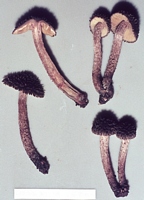
Caption: 67/262: Inocybe calamistratoides
Owner: Egon Horak | 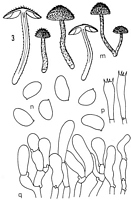
Caption: Inocybe calamistratoides (type): m, carpophores; n, spores; p, basidia; q, cheilocystidia.
| 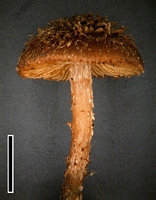
Caption: scale=5mm
Owner: J.A. Cooper | 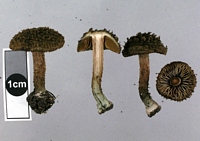
Owner: J.A. Cooper | 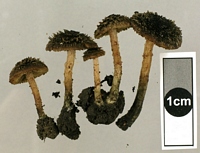
Owner: J.A. Cooper | 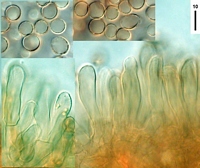
Caption: cheilocystidia
Owner: J.A. Cooper | 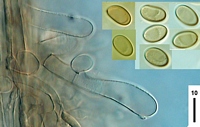
Caption: caulocystidia and spores
Owner: J.A. Cooper | 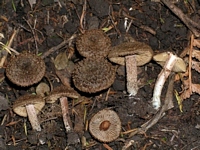
Owner: J.A. Cooper | 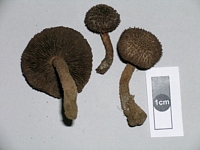
Owner: J.A. Cooper | 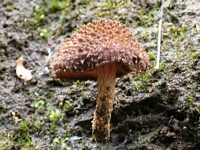
Owner: J.A. Cooper | 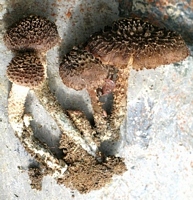
Owner: J.A. Cooper | 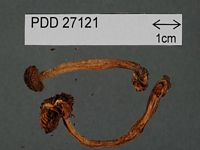
Caption: Dried type specimen
Owner: Herb PDD | |
Article: Horak, E. (1978) [1977]. Fungi Agaricini Novaezelandiae. VI. Inocybe (Fr.) Fr. and Astrosporina Schroeter. New Zealand Journal of Botany 15(4): 713–747 (http://www.rsnz.org/publish/abstracts.php).
Description: Pileus -35 mm diam., convex to umbonate-expanded
or campanulate; pale brown, brown or fuscous, often with greenish or olive tinge;
dry, densely covered all over with coarse, squarrose scales and squamules; margin
estriate, veil remnants absent. Lamellae adnexed to adnate, ventricose, crowded;
pale beige-ochraceous or beige-yellow, turning argillaceous or brown, reddening
after bruising, edge albo-fimbriate. Stipe -65 x -5 mm, cylindrical, equal;
concolorous with pileus or paler, black-green at base, covered with concolorous
scales and squamules; dry, becoming hollow, single and cespitose. Context brown,
reddening after exposure, black-green at base. Odour and taste fruity. Chemical
reactions on pileus: KOH negative.
Spores 8.5-11 x 5-6.5 µm, ovoid to subreniform,
brown, smooth. Basidia 28-38 x 7-9 µm, 4-spored. Cheilocystidia 15-40 x 7-12
µm clavate to subcylindrical, hyaline, thin-walled, forming sterile edge. Pleurocystidia
absent. Cuticle a trichoderm of cylindrical not gelatinised hyphae (5-12 µm
diam) entrusted with brown pigment. Clamp connections present.<
Habitat: On soil under Nothofagus
(N. fusca, N. cliffortioides), also among Sphagnum, New Zealand.
Notes: The most distinctive macroscopic character
of this species is the green-black context at the base of the stipe. As the
specific epithet of the New Zealand fungus indicates, this taxon is closely
related to I. calamistrata (Fr.) Quel. which, however, differs by having
larger spores cheilocystidia.
|